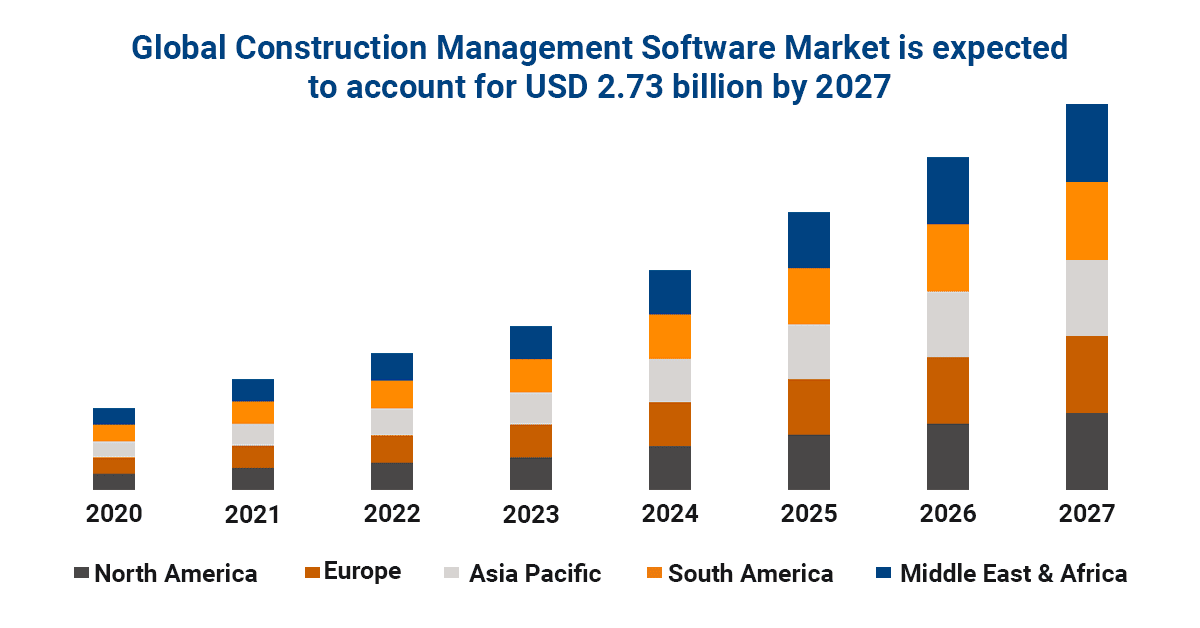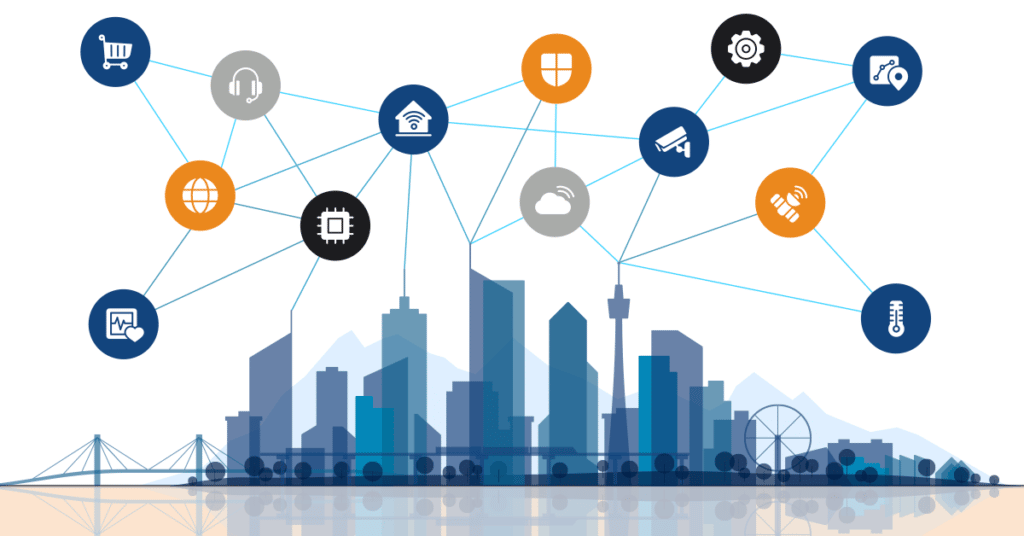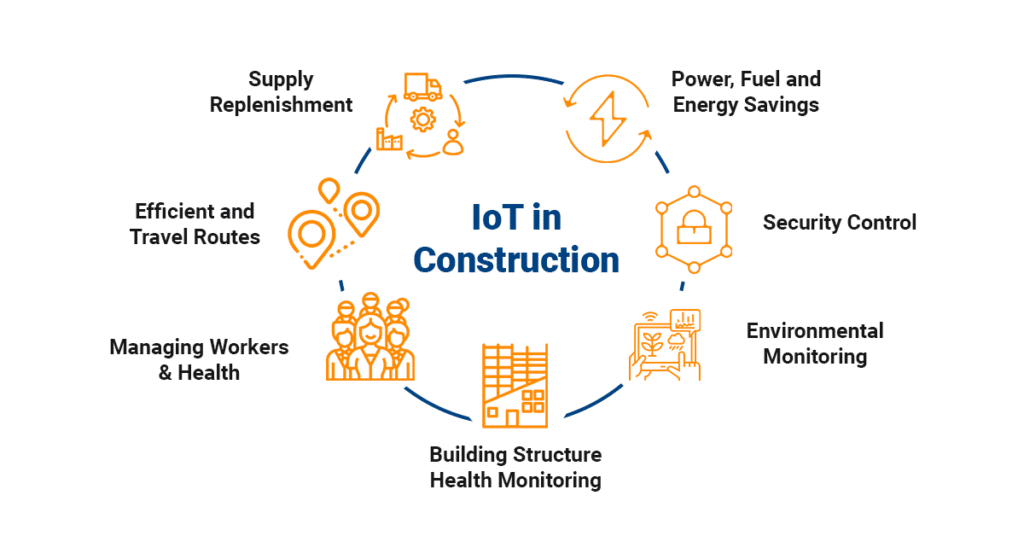Summary
Welcoming a new year, the construction sector expects to continue to grow and bring out more innovative ideas. There is tremendous competition due to the increasing demands and expectations of clients. Covid-19 hugely impacted the construction business, but new strategies have been created to adapt to the trends and challenges in 2023. Read this blog to understand what’s trending in the Construction industry in 2023.
Introduction
The construction industry’s future is promising due to increasing population growth and urbanization, resulting in opportunities for non-residential, residential, and infrastructure sectors. It has also increased the competition in the market. Emerging trends like software adoption, sustainability, smart cities, green building, and more are changing construction dynamics. As a result, the global construction sector is expected to reach up to $10.5 trillion by 2023. They are growing at a CAGR of 4.2% in 2018 and 2023. So, organizations should be aware of emerging trends to stay ahead of the game and prepare for the future.

Here are some of the most prominent construction industry trends that will shape the year 2023.
The Evolution of New Construction Materials
With competitiveness in the construction industry, organizations are under much pressure to cut construction costs and look for sustainable materials. It has led to the industry looking for means to develop new materials for buildings to meet the requirements, i.e., demolition (C&D) waste and recycling construction to create engineered wood or aggregate. Therefore, the choice to make more-sustainable choices reflects positively. Nowadays, people are also interested in looking for alternative construction materials that do not adversely affect the environment. For example, usable bamboo is an alternative to timber as it needs around a decade to grow, whereas bamboo can be harvested in only three years. Thus, making bamboo more sustainable.
Prefabricated and Modular Construction
Experts following construction trends often notice that there’s historically a cyclical nature to what is currently popular. If something may not be trending today, it may be in demand in the future. Similar is the case with prefabricated and modular construction. People generally prefer home-building kits and enjoy the convenience of having all the supplies that can be easily assembled. In modular construction, most of the structure is constructed off-site and then put together at the destination.
Likewise, prefabrication involves building or creating the components off-site and then compiling them at the destination place. This process targets the transport-related emissions that are related to construction. It allows the building processes to proceed more smoothly with fewer errors or budget overruns.
Digitalization and Technologies in Construction Industry
The construction industry is revolutionizing and has started using cutting-edge technologies. For example, businesses use cloud solutions rather than manual paperwork for information. Cloud Deployment proves to be very efficient and effective in construction, wasting no time. It provides various services like database access from anywhere at any time, storage, flexible resources, analytics, and more. It has unlocked new capabilities and reduced the chances of errors. Managers can use technology-based equipment to get live data and site visibility from anywhere. These technologies are in high demand as they can track devices and monitor equipment and asset performances at the construction site.
New technologies are constantly emerging, from drones to BIM (Building Information Modeling) software.
· Construction ERP Software is a new technology raging in the construction sector. It is an all-in-one digital solution that allows seamless communication between the project site and the office. Industry experts highly recommend Xpedeon for large enterprises and SMBs. It is a unique purpose-built ERP solution for construction. Enabling the enterprise to generate insights on real-time data to help quicken decision-making while eliminating duplication of work, reporting, and manual reconciliations.
· The popularity of Data Collection Apps has increased in recent years. Earlier, the data was collected manually, which was time-consuming and had chances of errors, but these apps can gather more efficiently.
· BIM (Building Information Modelling) Software is in rage and has immense popularity as it helps in enhancing project outcomes. BIM software is used for design, facility management, construction, and engineering purposes. It is used to create a 3D module of the building, often valuable for architects, engineers, project managers, and other professionals involved in the construction project.
· Drones have been quite popular and have several benefits, as they involve multiple tasks for building inspections, surveying project sites, delivering materials, and traffic surveillance.
The Growth of Smart Cities
Many modern houses use smart appliances that help them with several chores to find information with less effort. Construction industries are now using those innovative technologies to build an intelligent, safe society that provides a better lifestyle for residents. It also allows designers, builders, and engineers to push their boundaries and create something innovative and practical for a long-term process. The construction of a smart city primarily includes smart service, industry, operation, and infrastructure.
Furthermore, smart cities help with promoting eco-friendly development, traffic statistics, and more. It uses digital technology and data to improve decisions that enhance day-to-day working.

Information is power, and a building can generate a large amount of high-value information. It is why there has been a significant rise in the global smart industry. The $410.8 billion ISD valuation in 2020 is expected to reach USD 820.7 billion by 2025. The ASME (American Society of Mechanical Engineers) had identified eight crucial elements to catalog a smart city, i.e., healthcare, water, security, engagement & community, mobility, community, housing & economic development, waste, and energy.
One of the most prominent examples is the house of Burj Khalifa. It is the tallest building in the world and is the route to digitalizing all government services. It includes nearly 100 initiatives that are infrastructure, financial services, electricity, communication, transport, and more.
Green Buildings
Eco-friendly practices are trending in the construction industry. For example, solar panels are used on the roofs of commercial and residential structures as it helps save money along with promoting a healthy environment. Another example is using recycled items for construction. Construction companies are working on reaching a net-zero emission by 2050. It is only possible if the greenhouse gas emissions are equivalent to the amount removed from the atmosphere. To achieve this, people are moving towards sustainable materials. These green initiatives are also getting increasing government support. The AEC industry (Architecture, Engineering, and Construction) is coming together to work on reducing environmental impacts from construction activities.
Use of 3D Printing Technology
The 3D printer is a game changer and trending as it helps lessen the construction duration and promotes sustainability. 3D printing technology is being used in building schools and refugee shelters. It also allows designers and engineers to think out of the box and bring out their creativity. Many development projects have used 3D printing technologies to construct buildings in the past few years.
For example, in 2014, Arup engineers used 3D printing to fabricate a steel node as a lightweight structure. Also, a Shanghai-based firm, WinSun, had used large 3D printers to build multiple homes to manufacture elements off-site. Also, in 2018, MX3D completed the production of the first 3D-printed metal bridge, which is being tested in Amsterdam.
IoT Devices and Robotics
IoT devices and robotics are heavily influencing the construction sector. Nowadays, IoT sensors track the equipment used at the sites along with geofencing technologies. This technology also helps secure the assets and assure them to leave them at the designated location. In addition, it prevents extra transportation costs. The use of construction robots is also becoming common as it reduces risks of injuries and assists the project in maintaining its timeframe. They help at construction sites by handling materials with utmost precision. One of the most used robots is AMR (Autonomous mobile robotics). They can be incorporated at multiple locations, like infrastructure, architecture, demolition, and masonry. It increases accuracy, which eventually boosts productivity.

Supply Chain Technologies
Construction industries are looking for trends that will lessen their shortcomings and give them a competitive advantage—moving towards supply chain technologies to help them reduce extra costs associated with surplus items. Some high-tech supply chains even have forecasting features enabling businesses to react quickly to detrimental industry trends. Supply chain technologies effectively manage when and how products and services are acquired. The construction sector is highly fragmented, comprising of suppliers, contractors, architects, indirect suppliers, and various stakeholders. Supply chain technology fills the communication gap by synchronizing across the supply chain network and providing data on equipment, materials, and other construction-related milestones.
Conclusion
2023 is an excellent year for construction. These new technologies can help construction companies complete projects cost-effectively and faster. It is a fast-changing sector with a foreseeable future. These trends give the industry and clients flexibility and confidence to combat challenges. Various obstacles organizations encounter delay projects or affect the profit margin. It can be due to multiple factors like the need for more communication between project sites and branch/ head office, thefts at building sites, errors, or duplicity on documents, and more. The above trends aim to help by smoothening functions and dismantling traditional barriers.
More on Xpedeon
Xpedeon is the construction ERP software suitable for contractors, housebuilders, and property developers. It is a business management software that provides on-premise, off-premise, and cloud support. Xpedeon helps manage budgets, and cash flow within projects, establishes proper workflow processes, evenly distributes the information that can be accessed from anywhere, and eliminates communication gaps. It digitally transforms businesses as it is adaptable, secure, scalable, and agile in meeting industry requirements. Moreover, it has comprehensive administrative and operation capabilities that address the most understated implications.
If you want to know more about Xpedeon, you can always contact us by writing to us at Contact Xpedeon. Our expert will reach out to you and help you with any queries. You can also visit our website www.xpedeon.com. to read what our clients say about us.
Share this Post

